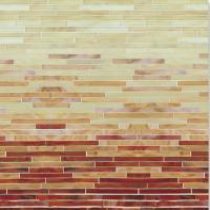Landscape Architecture for Landscape Architects › Forums › GENERAL DISCUSSION › Any great tips on the exam – section C
- This topic has 1 reply, 8 voices, and was last updated 14 years, 7 months ago by
 nca.
nca.
-
AuthorPosts
-
May 13, 2011 at 6:08 pm #162965
 Randy LyonsParticipant
Randy LyonsParticipantI am just looking for general suggestions, hints, tips or whatever about the exam – section C (site design) I have been studying and I only have month to the day until the exam. The practice material that is put out by ASLA and CLARB has been very helpful. Let me know what you did as you got ready for your exams.
May 14, 2011 at 2:57 am #162975 ncaParticipant
ncaParticipantI’m curious to read any advice from thos who have taken section C as well. I agree that the study material provided has been very helpful though it’s difficult to continue practicing once you’ve completed all the vignettes. If anyone has any other material they could share that would be great!
May 14, 2011 at 3:11 am #162974 Andrew Garulay, RLAParticipant
Andrew Garulay, RLAParticipantIt has been a long time, but the key to it back then was to think practical and ignore the temptation to be an artist. I remember thinking that they seemed to be set up so as to temp the artist in you to to over power the practical – particularly with vehicular and pedestrian conflicts.
May 15, 2011 at 1:51 am #162973 Tim BrownParticipant
Tim BrownParticipantNick,
There’s a bunch of vignettes on the LARE google group , including the entire ppi book
May 18, 2011 at 8:31 pm #162972Douglas M. Rooney
ParticipantTEMPLATES…..lay down a sheet of trace over your vignette. Take a sheet of stiff vellum and trace the design components. This includes generic parking lot blocks that you need to create. Use these “puzzle pieces” to try out different arrangements. When you have your final design, tape them to the trace and then move the trace under your vignette sheet. Trace quickly. As a general strategy examine all vignettes before starting and attempt to figure out their difficulty. Start with the easiest and leave the hardest for last. However do not get hung up second guessing yourself on the easy ones until you have completed all vignettes and then check your work. This way you don’t end up with blank vignettes. Always be aware of the fact that these problems are very “tight” and there is rarely more than one correct design(except on problems that require two unique designs). Watch for these constraining factors.
Good luck!
May 18, 2011 at 9:54 pm #162971 Randy LyonsParticipant
Randy LyonsParticipantThat is great advise – this is going to save ALOT of time. I have been worried about the tme factor on these.
Thanks.
May 18, 2011 at 10:08 pm #162970 David LorberbaumParticipant
David LorberbaumParticipantWith my experience with the exam time management was the biggest help. I started out doing a single problem two or three nights after work. Then the next week I would set aside two hours and do two problems in one sitting. I did this until I was able to set aside 4 hours on the weekend and go through 4 vignettes just like the real exam.
This helped me tremendously because I had that mental time clock already in place and I did not panic when I took the real exam. Now, it took me a couple of times for Section E, but I was very fortunate to pass C on my first attempt. Reading through the problems and knowing you can do all 4 problems in the allotted amount of time is what helped me most.
May 18, 2011 at 10:10 pm #162969 MLCCParticipant
MLCCParticipantHere are a few pointers that worked for me. I passed it the 1st try in December (and I was nervous!!)
1) Do as MANY vignettes as you can. Even if you get frustrated, remember that if you do one wrong, you’ve just learned something! You add that to your bank of knowledge, and now you’re one step farther than you were before.
2) Keep doing vignettes up until close to the test. I was seriously struggling with this section until about a week or even less, before the exam. I was about to give up. Then something clicked, and then I finally made progress, and ‘got it’. So don’t give up.
3) Focus on understanding the rules, the concepts, what you need to do.. etc.. all the basics BEFORE focusing on time. Focus on getting it done within an hour after you’ve done the basics. Don’t put double pressure on yourself do do both. Start with getting a thorough understanding, then once that’s out of the way, you can calmly focus on your speed.
4) (****I wish someone had told me this one!) Make sure you bring a solid white piece of 11 x 17 cardstock or paper to put beneath your vignette. The booklet of vignettes is just a bunch of sheets of vellum, so you have to cover up what is beneath the vignette you are working on with the cardstock. At home, I did all my practice vig’s on trace, taped onto the vignette (on just regular copy paper). So this was not the same condition as the testing environment, and when I got to the test, it threw me off for a while.
Good luck and I hope this helps. Now if somebody could just help me pass section E!!!
May 18, 2011 at 11:47 pm #162968 Randy LyonsParticipant
Randy LyonsParticipantthanks – just what I was looking for.
May 19, 2011 at 4:14 pm #162967Douglas M. Rooney
ParticipantFor those that forget their 11×17 sheet, there is another way to deal with the vellum issue, assuming that you are working on a white or light colored surface( I recommend that everyone bring some sort of board to draft on because the tables at some test centers are not good surfaces to draw on). You can “think outside the book” by taping down only the sheet you are working on and fold all other sheets up above the sheet you are working on. I took both graphic sections this way and it worked beautifully and it is easier to tape down a single sheet that deal with the entire book below your drawing. It also helps you avoid transferring line work to sheet below if you are pressing too hard.
May 19, 2011 at 5:37 pm #162966 Christopher PatzkeParticipant
Christopher PatzkeParticipantBe sure to review the scale of the drawing and the scale of the components! When I took this section all of the vignettes except one gave templates for required components at the same scale as the base plan. One vignette illustrated the required components at a different scale than the plan. A large majority of those sitting in the exam with me missed the scale change.
-
AuthorPosts
- You must be logged in to reply to this topic.


